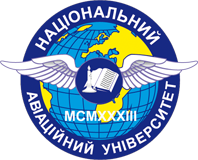Learning process modeling while teaching engineering graphics
DOI:
https://doi.org/10.18372/2415-8151.11.11883Keywords:
Graphic disciplines, modeling of educational process, qualimetric estimation, positive and negative factors, interrelation between factors.Abstract
Matters connected with arisen problem situation while teaching graphic disciplines are considered in this article. Sharp reduction of academic hours for graphic disciplinesstudy and increased requirements for education quality causednecessity to develop new ways of teaching this discipline. One of the possible approaches to improve the situation is redefining the content and forms of teaching engineering graphics. To determine the qualimetric estimate of students used method for constructing the tree of properties. The qualimetric estimation of a student is offered on the basis of internal factors. Positive and negative factors influencing successful training are investigated. Management of the learning process is achieved by the continuous monitoring of students' knowledge. For each academic group calculated integral indicator of progress. Identified the most of significant factors among positive and negative ones. Analytical dependencies are determined allowing to manage the educational process
References
Subetto A. I. Noosfernoye obrazovaniye kak mehanizm noosfernoy chelovecheskoy revolyutsii v XXI veke I proriva chelovechestva k kosmonoosfernoy paradigm budushey Istorii. Obshestvo. Sreda Razvitiye. 2012, №2. S.177–181
Azgaldov G. G., Kostin A. V. Innovatsii v netehnicheskoy sfere – neobhodimost’ I vozmojnost’. Nauchnoye, exspertno-analiticheskoye I informatsionnoye obespecheniye natsional’nogo strategicheskogo proektirovaniya, innovatsionnogo I tehnologicheskogo razvitiya Rossii. Tez. Dokl. 5-oy Vseross.nauch-praktich. konf / 28-29 may 2009. (INION RAN). Moskva, 2009
Prohorov Yu. K. Upravleniye kachestvom [Quality control] : uchebnoye posobiye. SPb. : SPbGUITMO, 2007. 144 p.
Kaygorodtseva N. V. Innovatsionnaya metodologiya nachertatel’noy geometrii. Omsk. : OmGTU, 2013, 184 p.
Volkov V. Ya., Yurkov V. Yu., Panchuk K. L., Kaygorodtseva N. V. Kurs nachertatel’noy geometrii na osnove geometricheskogo modelirovaniya. Omsk : SibADI, 2010. 252 p.
Rotkov S. I. Tendentsii razvitiya ingenernoy geometrii i komputernoy grafiki. Materialy Ukraino-Rossiyskoy nauchno-prakticheskoy konferentsii. Ukrain-Russia scientific-practical conferenses proceedings], Har’kov, 2006. S. 46–50
Lupandin V. I. Matematicheskiye metodi v psihologii : Uchebnoye posobiye. Ekaterinburg : Izd-vo Ural. Un-ta, 2009. 252 p.
Garry G. Azgaldov, Alexander V. Kostin. Applied Qualimetry: Its Origins, Errors and Misconceptions. Benchmarking : An International Journal.Vol. 18, Iss. 3, 2011, S. 428–444.
Kuchkarova D. F., Achilova D. A. Metodi statisticheskogo analiza pri obuchenii injenernoy grafike. Pedagogika, Tashkent. 2014 №5, S. 68–71
Sidorenko Ye. V. Metody matematicheskoy obrabotki dannykh v psikhologii. Sankt-Peterburg : Rech’, 2007, 320










